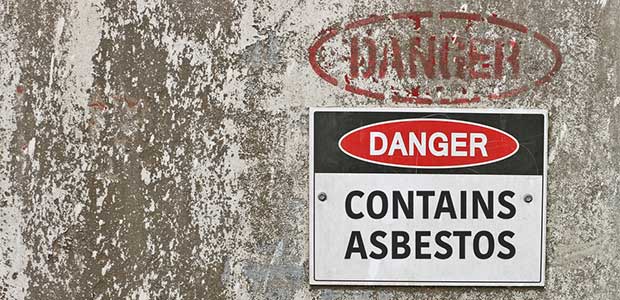
Occupational Health Risks: Asbestos
Over 125 million people are exposed to asbestos each year, and a large number of those incidents occur on the job.
- By Emily Liptak
- Jul 09, 2019
The importance of occupational safety can oftentimes be overlooked when so many other aspects of a job need to take priority. Unfortunately, those completing the work can be at risk of exposure to dangers on a job site that could cause severe injuries and illnesses. Amongst the list of dangers found while working, asbestos is arguably the most notorious workplace hazard in history. Asbestos handling requires proper knowledge and extreme caution. Over 125 million people are exposed to asbestos each year, and a large number of those incidents occur on the job.
What is Asbestos?
Asbestos is a natural mineral that is utilized in a number of building materials due to its favorable properties. Asbestos is categorized into five different groups including amosite, anthophyllite, crocidolite, tremolite, and the most commonly used form known as chrysotile. This mineral is resistant to heat and chemicals, and extremely durable, which makes it a popular tool to use within building materials such as:
- Insulation
- Roofing
- Flooring
- Tiles
- Plumbing
- Ductwork
- Cement
Asbestos has been banned in over 60 countries worldwide, but continues to be utilized in the United States with the importation quadrupling in 2018. Although asbestos hasn’t been used in the United States for home construction since the 1970’s it is currently used in commercial construction, and vast historic use makes this a high risk in the demolition or remodeling of an older building or home. Asbestos exposure has the potential to occur virtually anywhere as it was once a component used in over 3,000 products until 1988 when a law was passed requiring manufacturers to report asbestos production or use to the EPA. Since then, the use of asbestos in everyday products has gone down, but it continues to be used in other areas of work. Those with the highest risk of asbestos exposure while on the job include:
- Construction workers
- Shipyard workers
- Industrial workers
- Manufacturing
- Mechanics
Potential Threats
Occupational safety should always be of top importance, but when workers face the risk of asbestos contact it is vital that the protection of these employees is a top priority. There are a number of health implications that can arise if someone has been exposed to asbestos fibers. Although asbestos is not dangerous when sitting dormant, if fibers are released by something as simple as an accidental hole in the wall, those in its presence are put at risk.
Asbestosis is a lung disease that can occur due to asbestos exposure. This exposure can cause scarring of the lungs, and many affiliated symptoms such as shortness of breath, weight loss, loss of appetite, chest pain, and a dry and continuous cough. Asbestosis occurs after prolonged exposure to asbestos fibers, and will happen over a long period of time. This is a chronic disease and although it can not be cured, it can be treated to continue an acceptable quality of life.
Although asbestosis occurs after frequent exposure, mesothelioma can occur after being exposed just once. Mesothelioma is a rare cancer that can be found within the lining of the heart, lungs, and stomach. Exposure to the most commonly used type of asbestos, chrysotile, is a known carcinogen and cause for this form of cancer, and more than half of mesothelioma cases can be attributed back to workplace exposure. This cancer almost always has a poor prognosis, with only 9% of those diagnosed living 5 years or more.
Because of the potential health hazards and life threatening illnesses that asbestos exposure brings, knowledge is power. Taking the proper safety precautions will help prevent someone from contracting these illnesses, and reduce the number of workplace related illnesses and deaths.
How to Protect
An illness like mesothelioma doesn’t present itself for 10-50 years after exposure, so it is extremely important to take the proper safety precautions now to prevent an illness from appearing later on in life. There are a number of safety rules that should be followed to ensure the safety of those working on a job site, as well as those that live and work nearby.
According to federal law, employees have the right to know about potential health hazards they may be exposed to while at work. It is also important to make sure workers are made aware of any presumed asbestos-containing materials, or PACMs found in buildings if they were built and installed before the 1980’s. Although a minimal amount of asbestos exposure is legal according to OSHA’s permissible exposure limit (PEL), it does not mean it is safe or that employees are not in danger.
A proper workplace assessment must be done to make sure an area is safe for employees to inhabit, and continual monitoring must be completed as well. Employers must keep records of previous asbestos scares, and continue to update these records with each new test. In the end, if the proper protocols are followed and training is completed, employees and their employers should be able to safely work without concern for this unwanted danger.